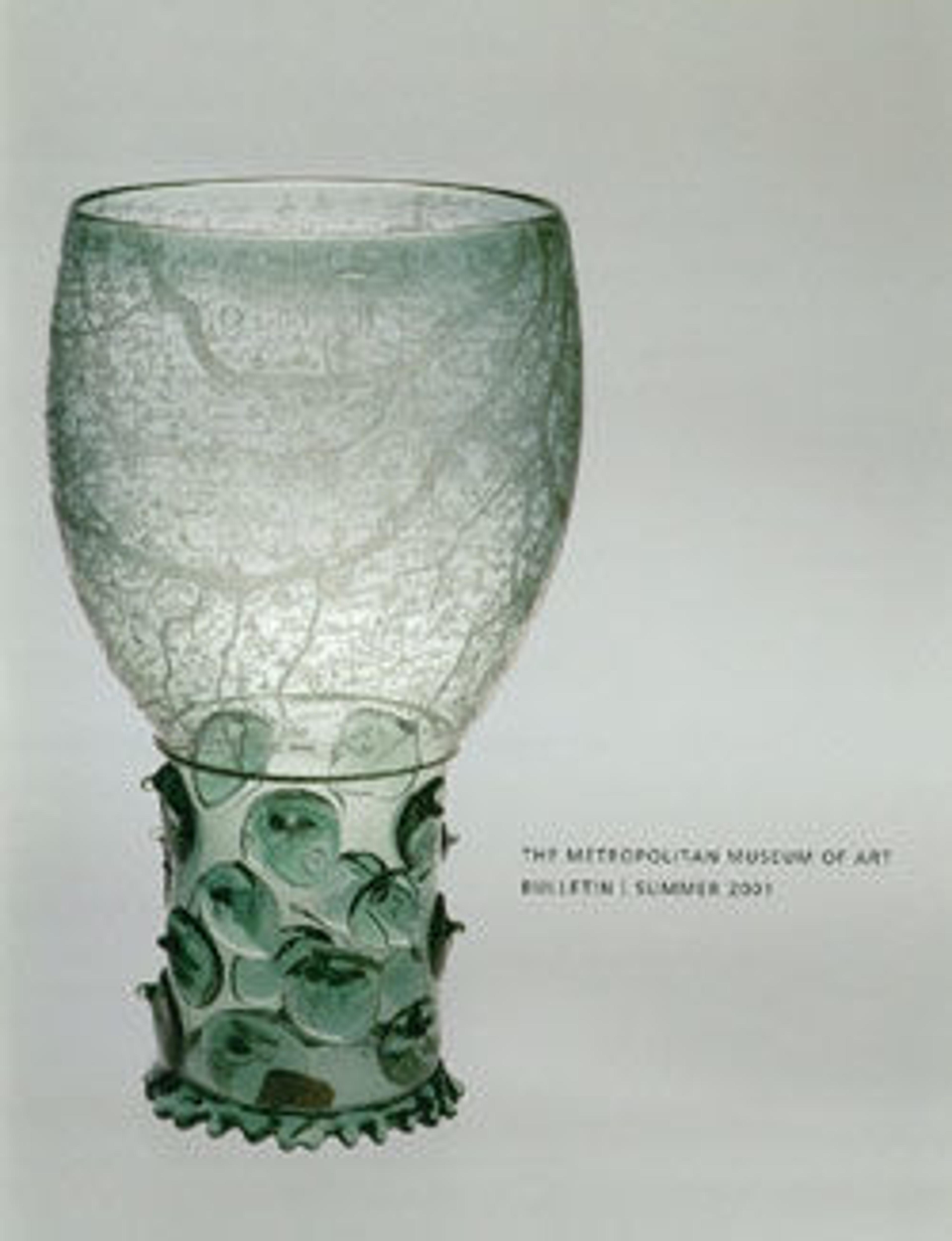Bowl with wheel-cut facets
This hemispherical bowl may have been made by blowing molten glass into an open mold (though possibly it was free-blown); subsequently, four rows of oblong-to-round facets were wheel-cut and polished. The thick glass, originally pale green, has lost much of its surface color and gained extensive iridescence through weathering.
Faceted bowls such as this one are characterized by uniformity of shape, size, and arrangement of the facets in four or five rows. They represent the most widespread type of late Sasanian glass vessel, found in excavations of Mesopotamian and Iranian sites dating from the fifth to seventh century A.D. Some examples—probably carried along the Silk Road to the Far East by Persian merchants and traveling embassies—have been found in Japanese contexts, namely in the sixth-century tomb of the emperor Ankan and in the Shoso-in Treasure at Nara, which was assembled by the emperor Shomu in the eighth century.
Faceted bowls such as this one are characterized by uniformity of shape, size, and arrangement of the facets in four or five rows. They represent the most widespread type of late Sasanian glass vessel, found in excavations of Mesopotamian and Iranian sites dating from the fifth to seventh century A.D. Some examples—probably carried along the Silk Road to the Far East by Persian merchants and traveling embassies—have been found in Japanese contexts, namely in the sixth-century tomb of the emperor Ankan and in the Shoso-in Treasure at Nara, which was assembled by the emperor Shomu in the eighth century.
Artwork Details
- Title:Bowl with wheel-cut facets
- Period:Sasanian
- Date:ca. 6th–7th century CE
- Geography:Iran
- Culture:Sasanian
- Medium:Glass; yellow-green
- Dimensions:3 3/16 × 4 1/16 × 4 1/16 in. (8.1 × 10.3 × 10.3 cm)
- Credit Line:Rogers Fund, 1959
- Object Number:59.34
- Curatorial Department: Ancient West Asian Art
More Artwork
Research Resources
The Met provides unparalleled resources for research and welcomes an international community of students and scholars. The Met's Open Access API is where creators and researchers can connect to the The Met collection. Open Access data and public domain images are available for unrestricted commercial and noncommercial use without permission or fee.
To request images under copyright and other restrictions, please use this Image Request form.
Feedback
We continue to research and examine historical and cultural context for objects in The Met collection. If you have comments or questions about this object record, please contact us using the form below. The Museum looks forward to receiving your comments.
